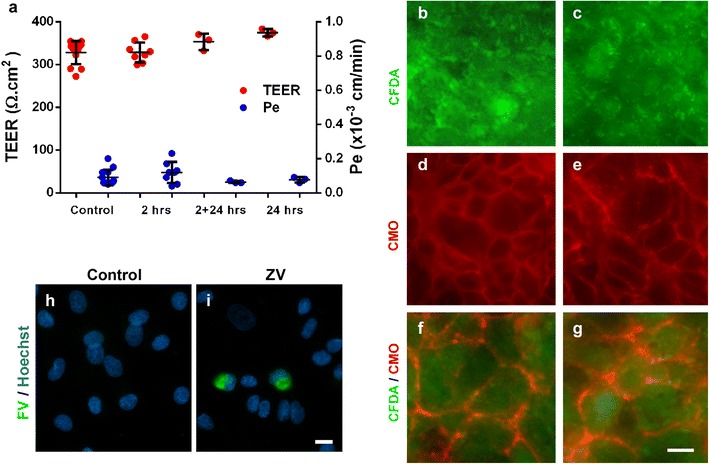Fig. 3.

ZIKV crosses the human BBB and infects i-NPs. i-BECs were cultured on Transwell inserts and the cells were mock-infected (control) or infected with ZIKV. a TEER (Ω cm2) was measured on each i-BEC insert, to ensure barrier integrity was intact, before infection with ZIKV. Only i-BEC inserts with TEER values ≥ 300 Ω cm2 were used in the assay. Sodium fluorescein permeability (Pe; cm/min) were measured in infected i-BECs at 2 h (2 h), 2 h infection followed by 24 h recovery (2 + 24 h) or 24 h (24 h) post ZIKV-infection with no recovery (mean ± SD). Low sodium fluorescein impermeability (Pe) during the course of ZIKV infection, similar to mock-infected controls (ns, p > 0.1, One-way ANOVA), confirmed an intact barrier. To demonstrate i-BEC viability and continuity of membrane contacts, uninfected (b, d, f) and ZIKV-infected (c, e, g) i-BECs were co-labeled with CFDA (b, c; green) and CellMask Orange (CMO) (d, e; red); overlay images shown in (f–g), on the Transwell membranes at the end of ZIKV transport experiments (24 h). h, i ZIKV crossing of the BBB and infection of underlying i-NPs (i) was confirmed through immunofluorescence staining with an anti-flavivirus antibody (FV; green) 24 h post-infection. Scale bar = 20 µm
